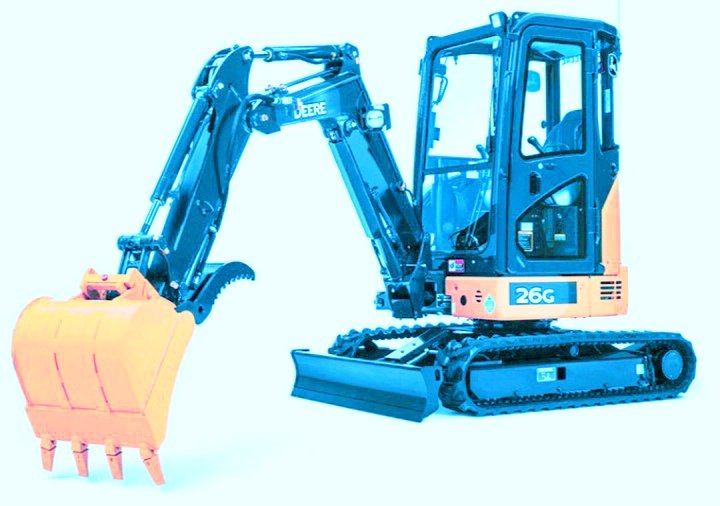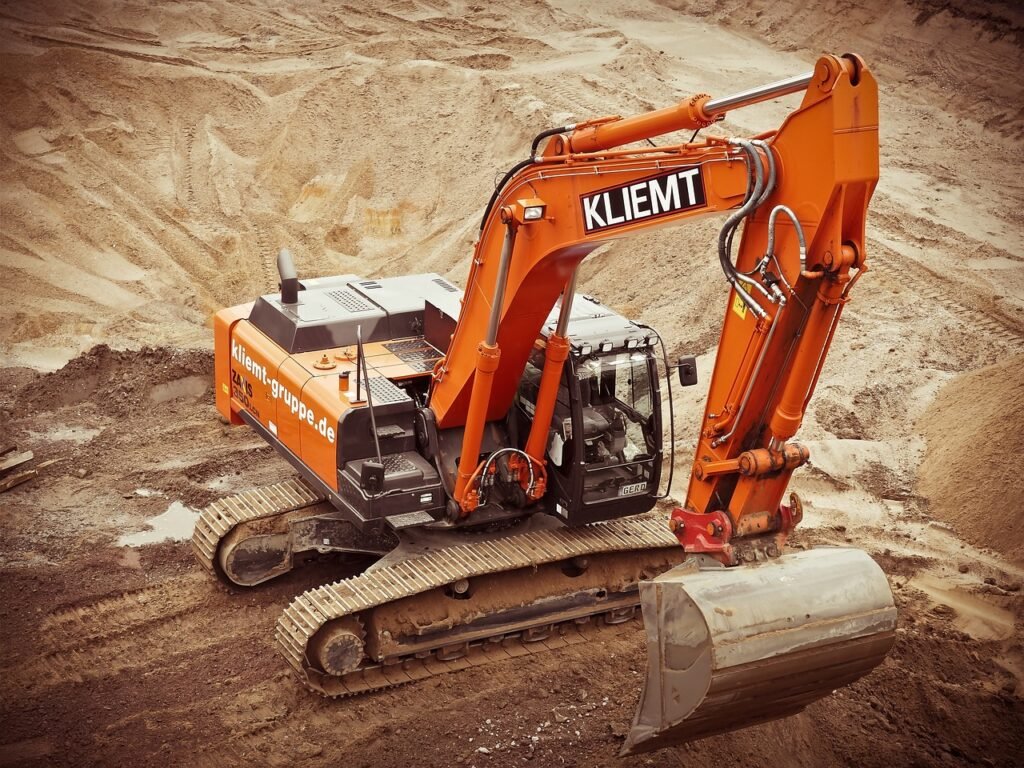When it comes to small excavators, there are several different types available on the market.
Each type has its own unique features and benefits, making it important to choose the right one for your specific needs.
Here are some of the most common types of small excavators:
1. Mini Excavators
Mini excavators are the smallest type of excavators available.
They are typically use for small-scale projects such as landscape, digging trenches, and light construction work.
Mini excavators are compact, maneuverable, and easy to transport, making them ideal for working in tight spaces.

These excavators usually have a maximum digging depth of around 10 feet and a bucket capacity of 0.5 to 3 cubic yards.
They are power by diesel engines and come with various attachments such as buckets, hammers, and augers.
2. Compact Excavators
Compact excavators, also known as compact track loaders or mini track loaders, are slightly larger than mini excavators.
They are design for heavier-duty tasks such as digging foundations, demolishing structures, and moving heavy materials.

Compact excavators are equip with rubber tracks, which provide better traction and maneuverability on different terrains.
They have a digging depth ranging from 8 to 14 feet and a bucket capacity of 1 to 5 cubic yards.
These excavators are often use in construction, landscaping, and utility work.
3. Backhoe Loaders
Backhoe loaders are versatile machines that combine the capabilities of a backhoe and a loader.
They are commonly use in construction, agriculture, and utility work.
Backhoe loaders have a digging depth of around 14 feet and a bucket capacity of 0.5 to 1 cubic yard.

These machines feature a digging arm (backhoe) at the rear and a loader bucket at the front.
They can be use for digging, trenching, lifting, and loading materials.
Backhoe loaders are typically equip with four-wheel drive and are suitable for both urban and rural environments.
4. Skid Steer Loaders
Skid steer loaders are compact machines that are widely used in construction, landscaping, and agriculture.
They are known for their maneuverability and versatility.

Skid steer loaders have a bucket capacity of 0.2 to 2 cubic yards and can reach a maximum speed of around 7 miles per hour.
These machines are equip with four wheels or tracks, allowing them to navigate through tight spaces and uneven terrains.
Skid steer loaders are commonly used for digging, grading, pushing, and lifting materials.
They can be fitted with various attachments such as buckets, forks, and augers.
Colors of Small Excavators
Small excavators come in a variety of colors, depending on the manufacturer and model.
The most common colors for small excavators are:
1. Yellow
Yellow is the traditional color for construction equipment, including excavators.
It is highly visible and easily recognizable on job sites.
Yellow excavators are often associated with durability, strength, and reliability.

2. Orange
Orange is another popular color for small excavators.
It is often use by different manufacturers to differentiate their products from competitors.
Orange excavators can seen in various industries, including construction, landscaping, and agriculture.
3. Red
Red excavators are less common but still be found in certain brand and models.
It’s often associates with power, energy, and strength.
A Red excavators can make a bold statement on a job site and stand out from the crowd.
4. Other Colors
In addition to yellow, orange, and red, small excavators can also be found in other colors such as blue, green, and gray.
Some manufacturers offer customization options, allowing customers to choose the color that best represents their brand or personal preference.
Other General Things to Know
When considering a small excavator for your project, there are a few other general things to keep in mind:
1. Size and Weight
Small excavators come in different sizes and weights.
Consider the size of your project and the space available for the excavator to operate.
Ensure that the machine can be easily transported to the job site.
2. Attachments
Check if the excavator comes with a variety of attachments such as buckets, hammers, and augers.

Different attachments can enhance the versatility and functionality of the machine, allowing you to tackle a wider range of tasks.
3. Fuel Efficiency
Look for an excavator that is fuel-efficient, as this can help reduce operating costs and minimize environmental impact.
Consider the type of fuel used (diesel or electric) and the machine’s overall energy efficiency.
4. Maintenance and Support
Find out about the manufacturer’s warranty, maintenance requirements, and availability of spare parts.
It’s important to choose a reputable brand that offers reliable customer support and after-sales service.
5. Safety Features
Ensure that the excavator has appropriate safety features such as rollover protection, backup cameras, and audible alarms.
Safety should always be a top priority when operating heavy machinery.
6. Operator Comfort
Consider the comfort and ergonomics of the operator’s cabin.
Look for features such as adjustable seats, climate control, and easy-to-use controls.
A comfortable operator is likely to be more productive and efficient.
By considering these factors and understanding the different types of small excavators available.
You can make an informed decision and choose the right machine for your specific needs.

